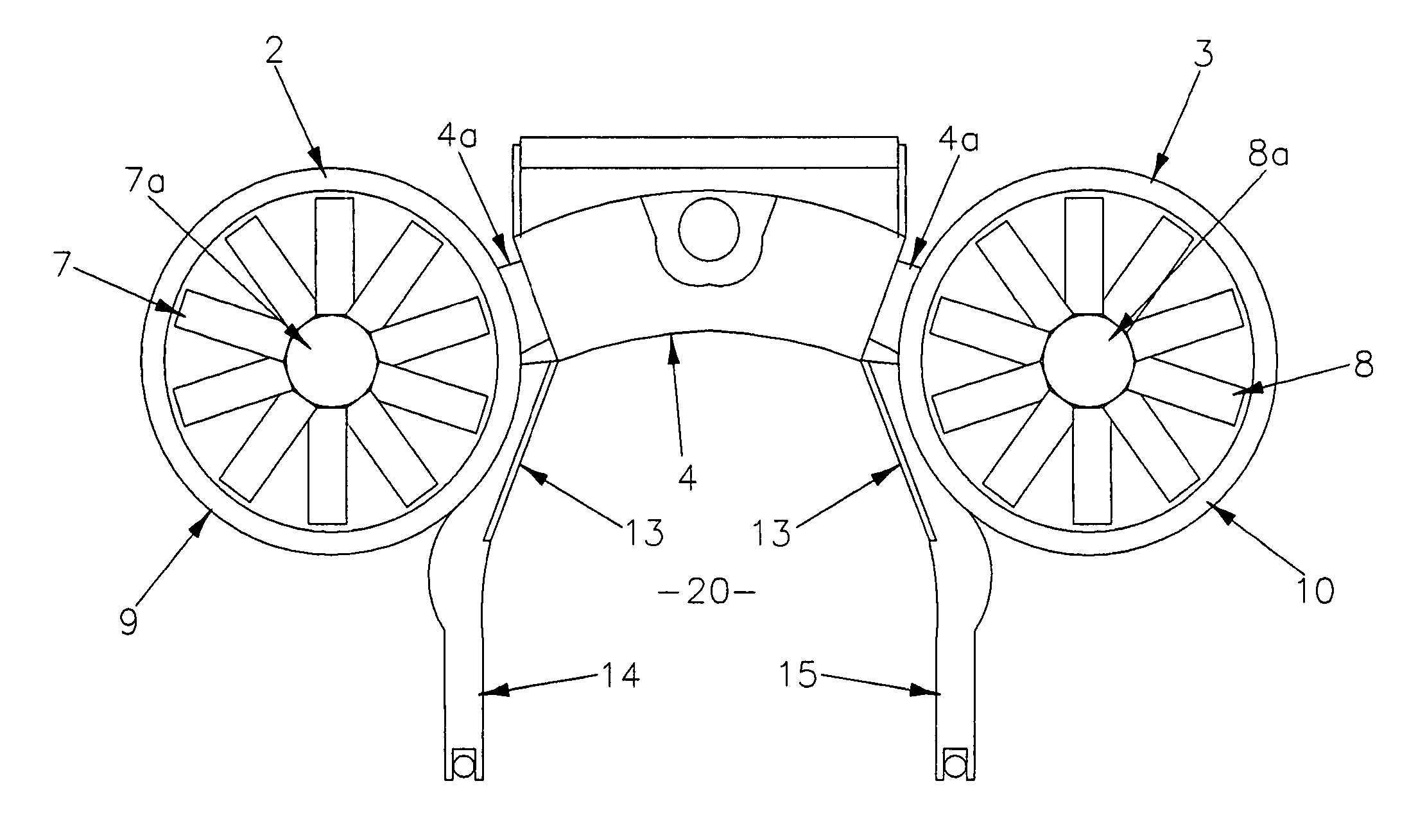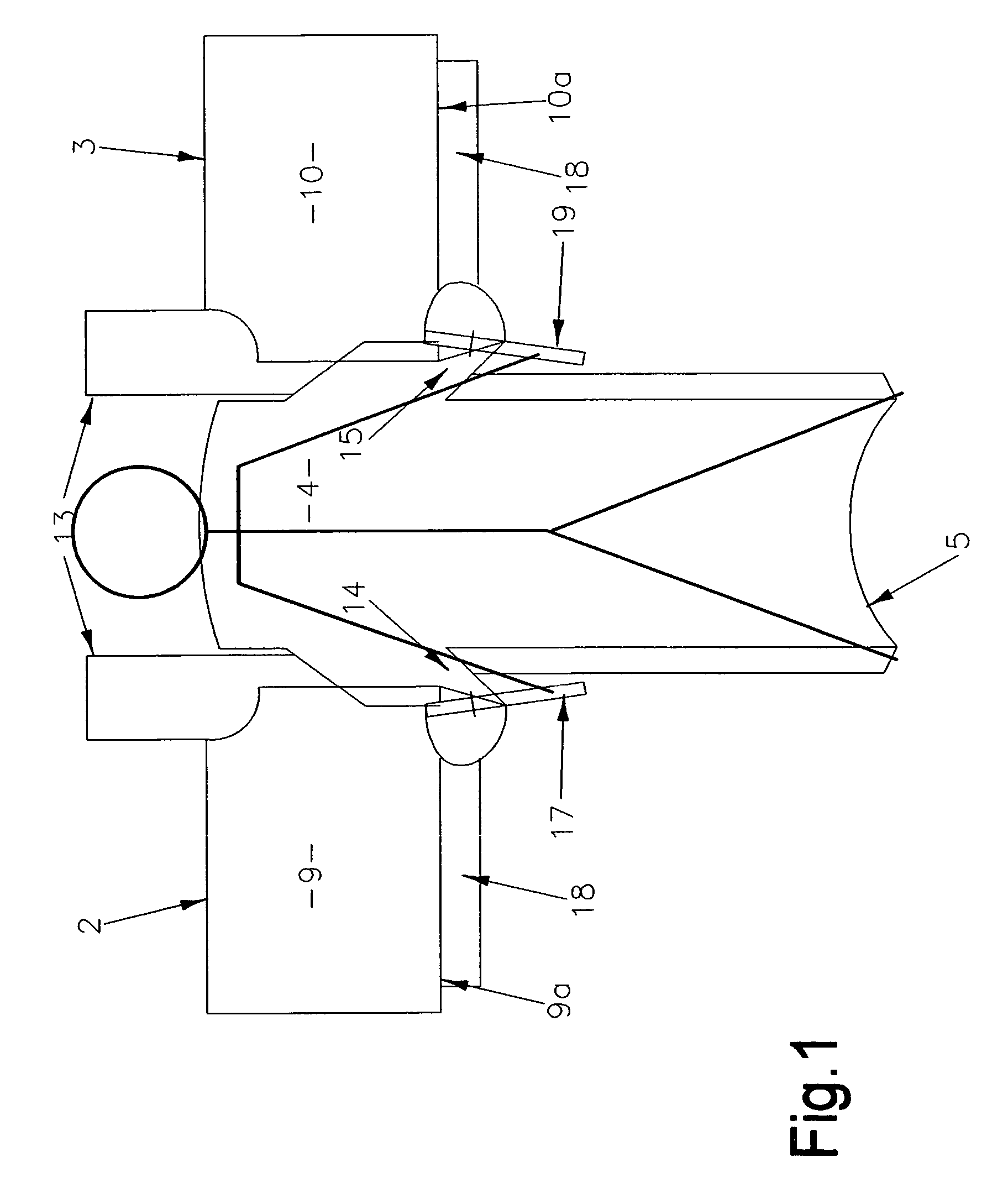Propulsion device
a technology of propeller and flight device, which is applied in the direction of vertical landing/take-off aircraft, aircraft navigation control, transportation and packaging, etc., can solve the problems of increasing the weight of the device, difficult control, and extremely short flight time (typically about 26 seconds), and achieves the effect of safe us
- Summary
- Abstract
- Description
- Claims
- Application Information
AI Technical Summary
Benefits of technology
Problems solved by technology
Method used
Image
Examples
Embodiment Construction
[0033]Referring to the drawings, a personal flight device 1 includes a pair of ducted fans 2,3 which are supported and spaced apart by a central housing 4, which also supports an engine 6 and a fuel tank (not visible).
[0034]The ducted fans 2,3 are of known design and consist of a central multi-blade fan 7,8 mounted on, and rotatable with, a hub 7a,8a, inside a concentric cylindrical duct 9, 10. The ducts 9,10 are rigidly mounted on the housing 4 by mounting brackets 4a (visible in FIG. 2 only) and are oriented such that in the “at rest” position shown in FIGS. 1 and 3, (i.e. when the device is resting on the ground) the axis of rotation of each fan is substantially vertical. The ends of the ducts 9,10 are depicted as open, but may in fact be covered by a protective grill or mesh.
[0035]The fans 7,8 are driven from the engine 6 by a drive means in the form of a pair of toothed drive belts 11a,11b to the corresponding hub 7a,8a. The toothed belt drive is shown (diagrammatically) in FIG...
PUM
 Login to View More
Login to View More Abstract
Description
Claims
Application Information
 Login to View More
Login to View More - R&D
- Intellectual Property
- Life Sciences
- Materials
- Tech Scout
- Unparalleled Data Quality
- Higher Quality Content
- 60% Fewer Hallucinations
Browse by: Latest US Patents, China's latest patents, Technical Efficacy Thesaurus, Application Domain, Technology Topic, Popular Technical Reports.
© 2025 PatSnap. All rights reserved.Legal|Privacy policy|Modern Slavery Act Transparency Statement|Sitemap|About US| Contact US: help@patsnap.com



